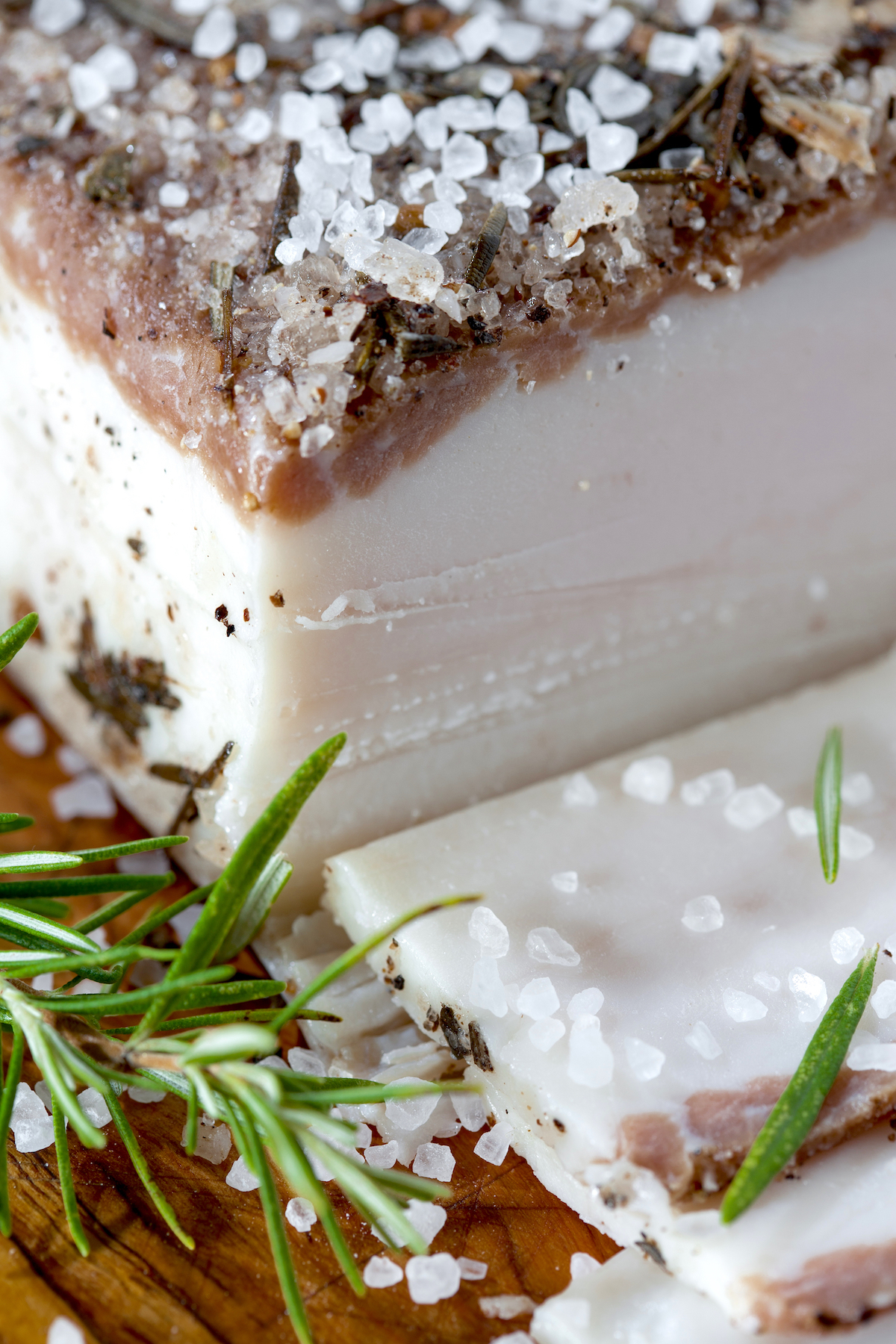
Lard de Colonnata
These include coriander, cloves, cinnamon, nutmeg, and other secret herbs mixed with sea salt. Then, due to the high humidity, everything spontaneously turns into brine, which in fact is much more solid than Arnad's brine. After about six months, Lardo di Colonnata is ready to serve. How?
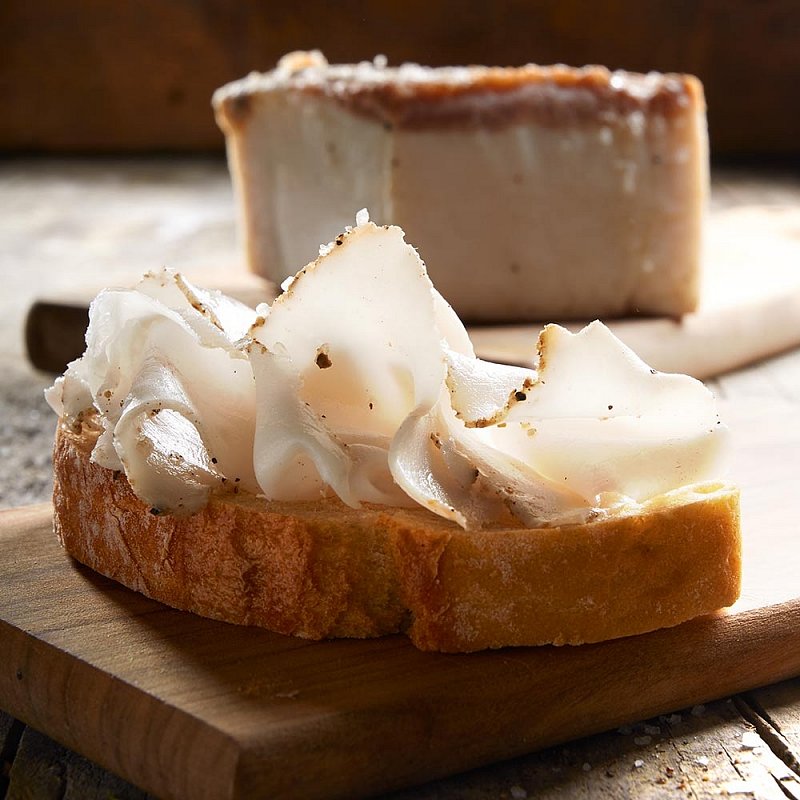
Lardo di Colonnata IGP Gustini Feinkost
Lardo di Colonnata is a beautiful white -- or sometimes pinkish -- slab of thick pork fatback, which is cured with a mixture of salt, spices, herbs and minced garlic. In the curing process the salt extracts moisture from the fat, creating a brine that preserves it from air and bacteria, and flavors the tissue. Alpi Apuane © Lucarelli
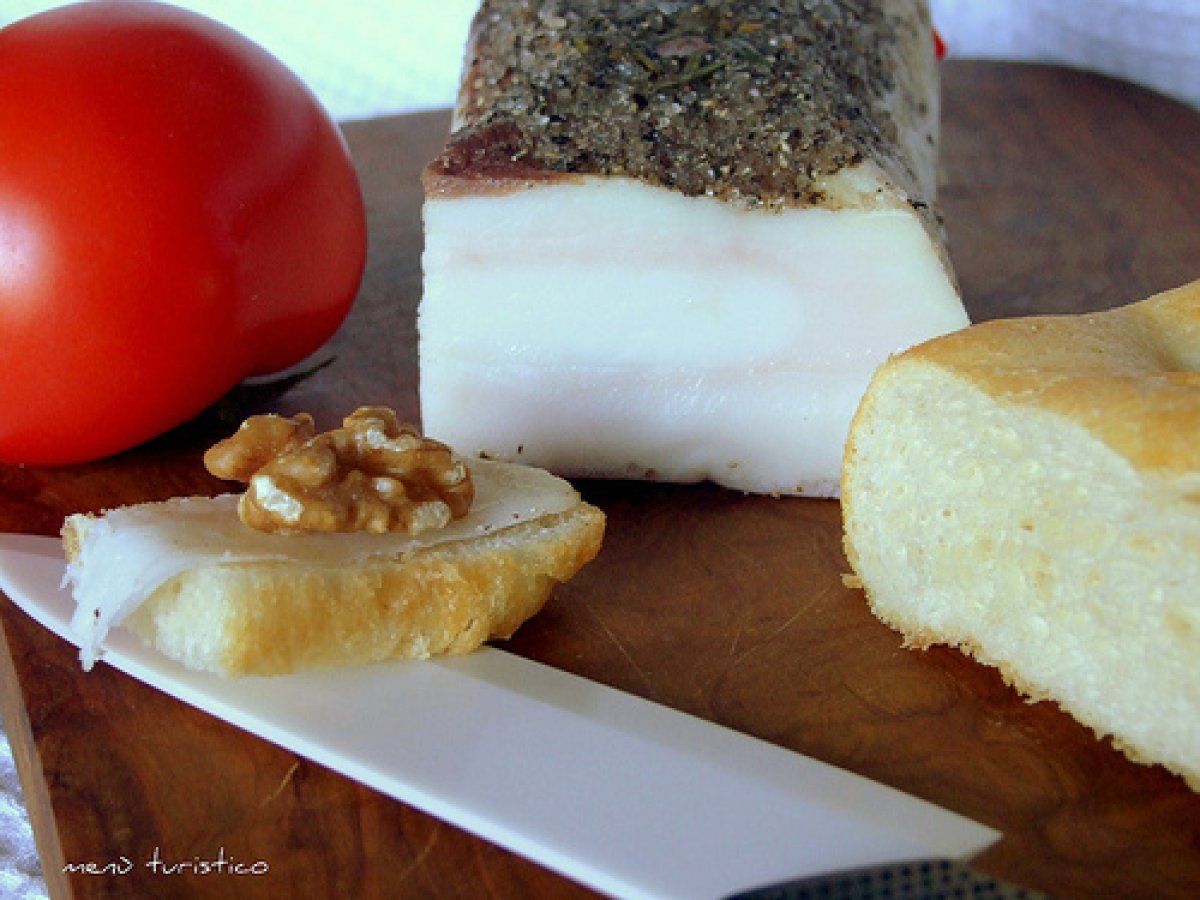
Il lardo di colonnata e gli stuzzichini..... Ricetta Petitchef
1. Preheat oven to 200°C. 2. Cut the bread loaf into 16 slices, each 1 cm thick. Toast the bread in preheated oven until golden. Remove from oven and allow to cool slightly. 2. Meanwhile, finely slice the Lardo. 3. Wash the tomatoes and cut them into quarters. Mince the rosemary. 4. Place the Lardo on the bread slices and season with pepper. 5.
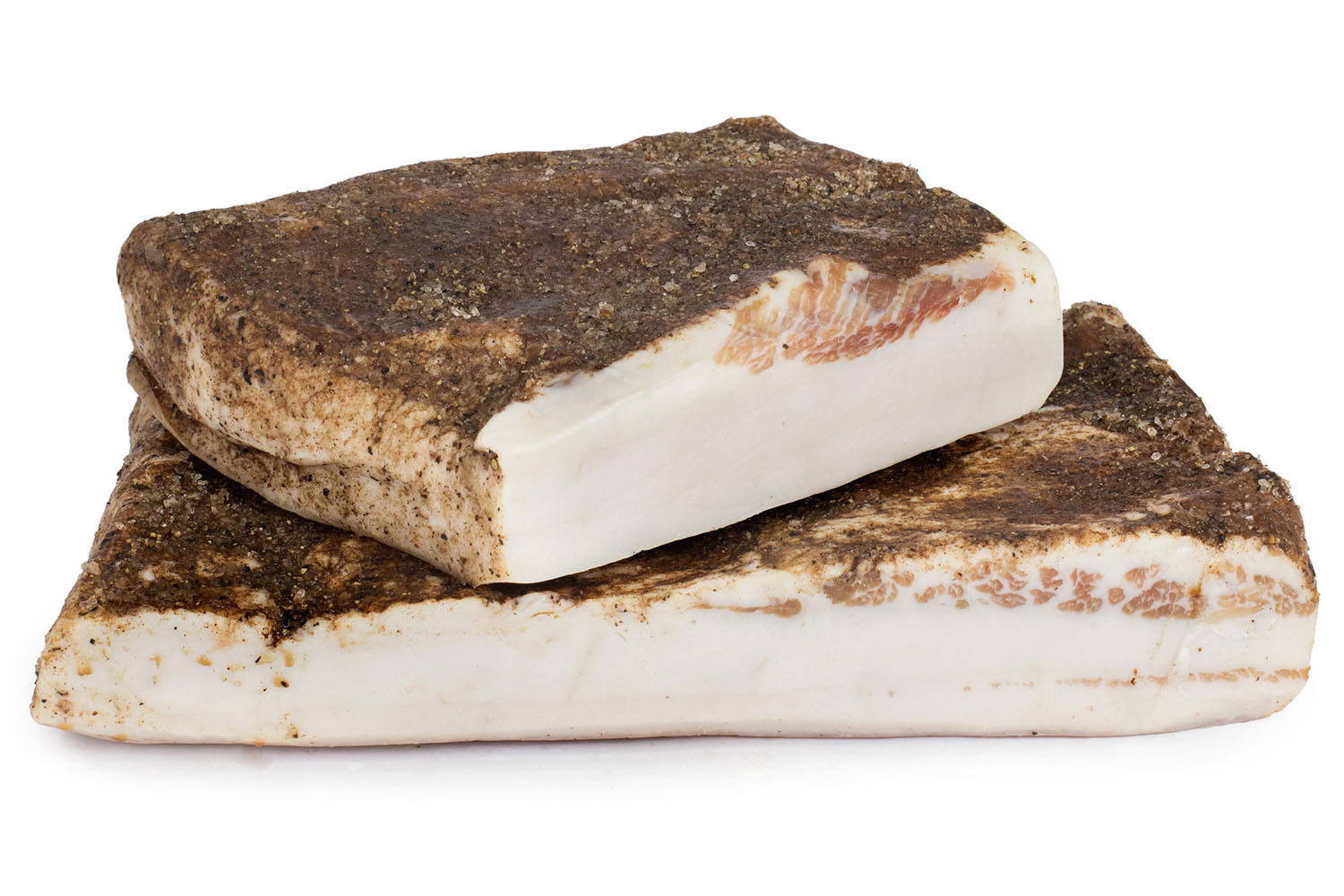
Lardo di Colonnata IGP Ricette Descrizione Storia Caratteristiche Chef e ricette
Lardo comes from Colonna, Italy, and is traditionally aged in marble boxes, which you can see in the picture above. Obviously that's not feasible here, so you will want to cure your pork fat in as dark a place as possible — light is the enemy, as it will oxidize the fat and turn it rancid over time.

Lardo di Colonnata Eat Florentine
How it is Produced It is made from the back of the pig and is prepared by first cutting the meat and treating the individual pieces with salt and spices such as cinnamon. They are then immersed in brine and placed inside a vessel excavated from the marble (view our 9 second video below!).
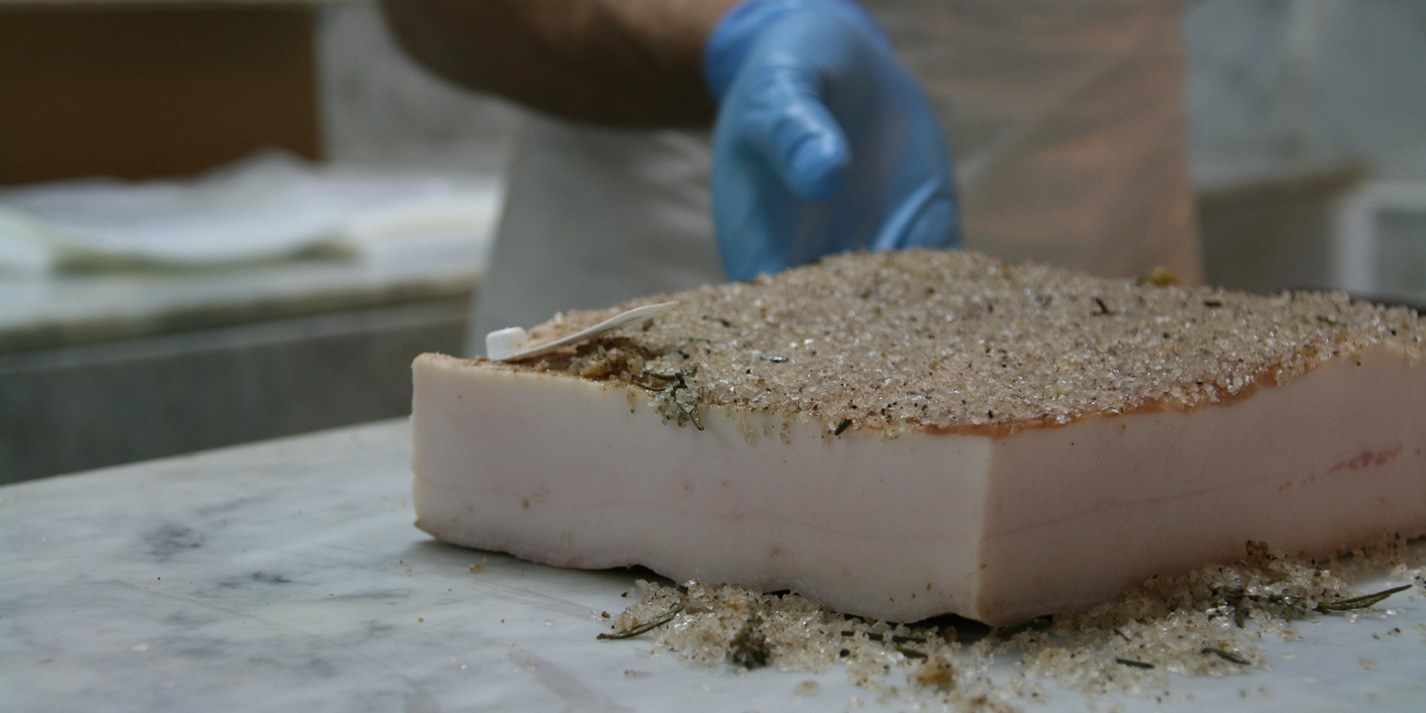
Lardo di Colonnata a hidden treasure in the Apuan Alps Great Italian Chefs
English Italian Many years ago, when I was living in the town of Pietrasanta, located on the coast of northern Tuscany, a friend visited from London. Sitting down in a local trattoria, she asked the waiter to surprise her with something traditional. The waiter was so pleased with this request and promised her he would bring a local delicacy!

LARDO DI COLONNATA DON FORLENZA
Lardo di Colonnata is made using two great Tuscan products: the white marble from the Apuan Alps, and pork, the main type of livestock in the region. Marble caves have existed in Tuscany since the Roman Age. The marble found in the caves is of excellent quality and is used to make beautiful columns.

Bruschette al Lardo di Colonnata Recipe Allrecipes
Recipes Experience Listings Pork Fillet Laced with Lardo di Colonnata Secondo Katia Amore Fri, 02/21/2014 - 04:00 Difficulty Level Medium Cooking Time 60 m Cost Medium Lardo is a type of 'salume', pork cured meat, made by curing strips of fatback with rosemary and other herbs and spices.
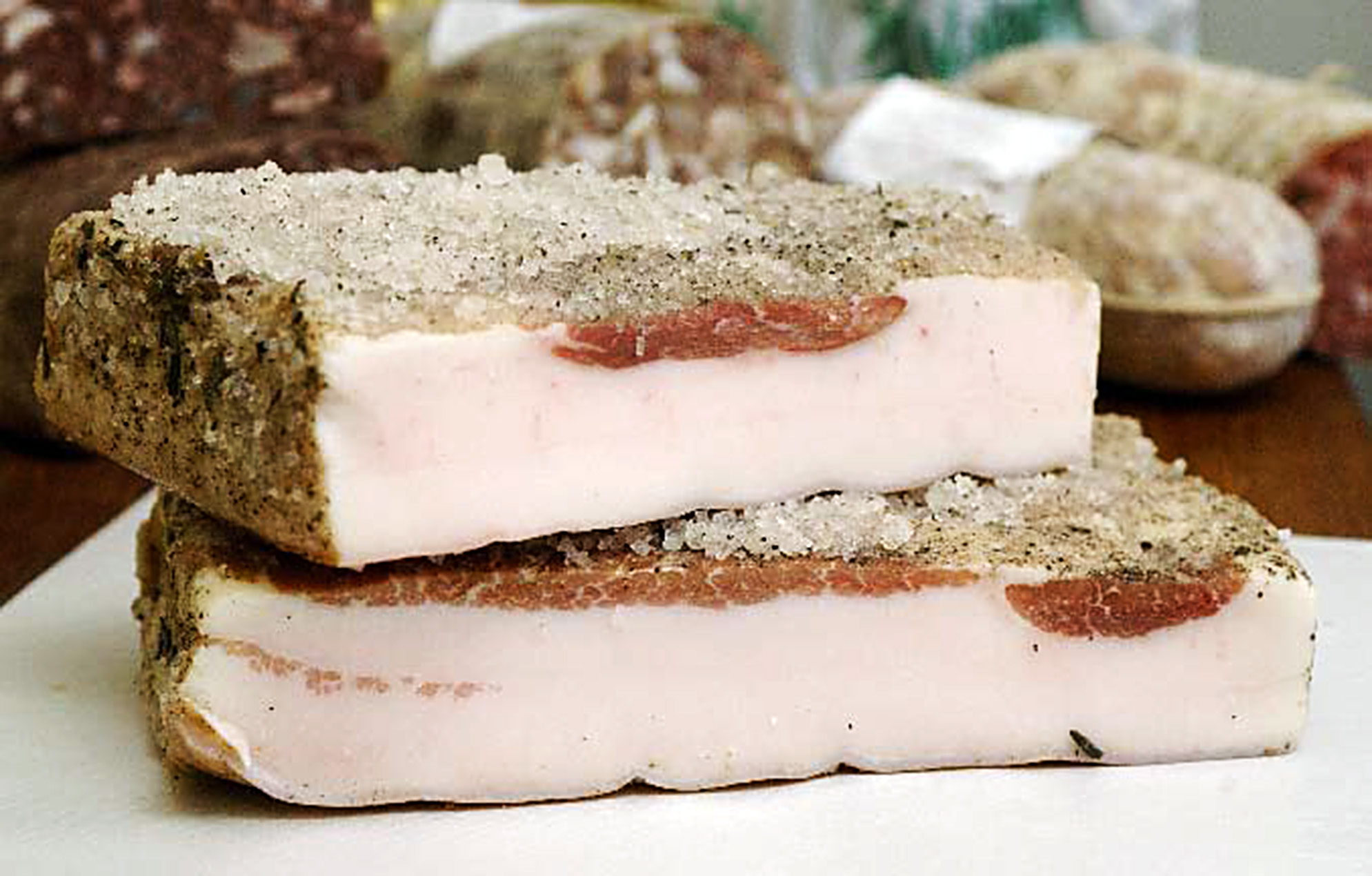
Lardo di Colonnata, het witte goud van Toscane Cosiddetto
Step 1 Gather your ingredients. Lardo, on the other hand, is pig back fat which has been cured in various ways. Italians eat it on bread or add it to recipes such as this one for ziti pasta with Italian lardo, known in Campania as 'ziti lardiati'. Step 2 Prepare the ingredients. Families used to make their own lardo.
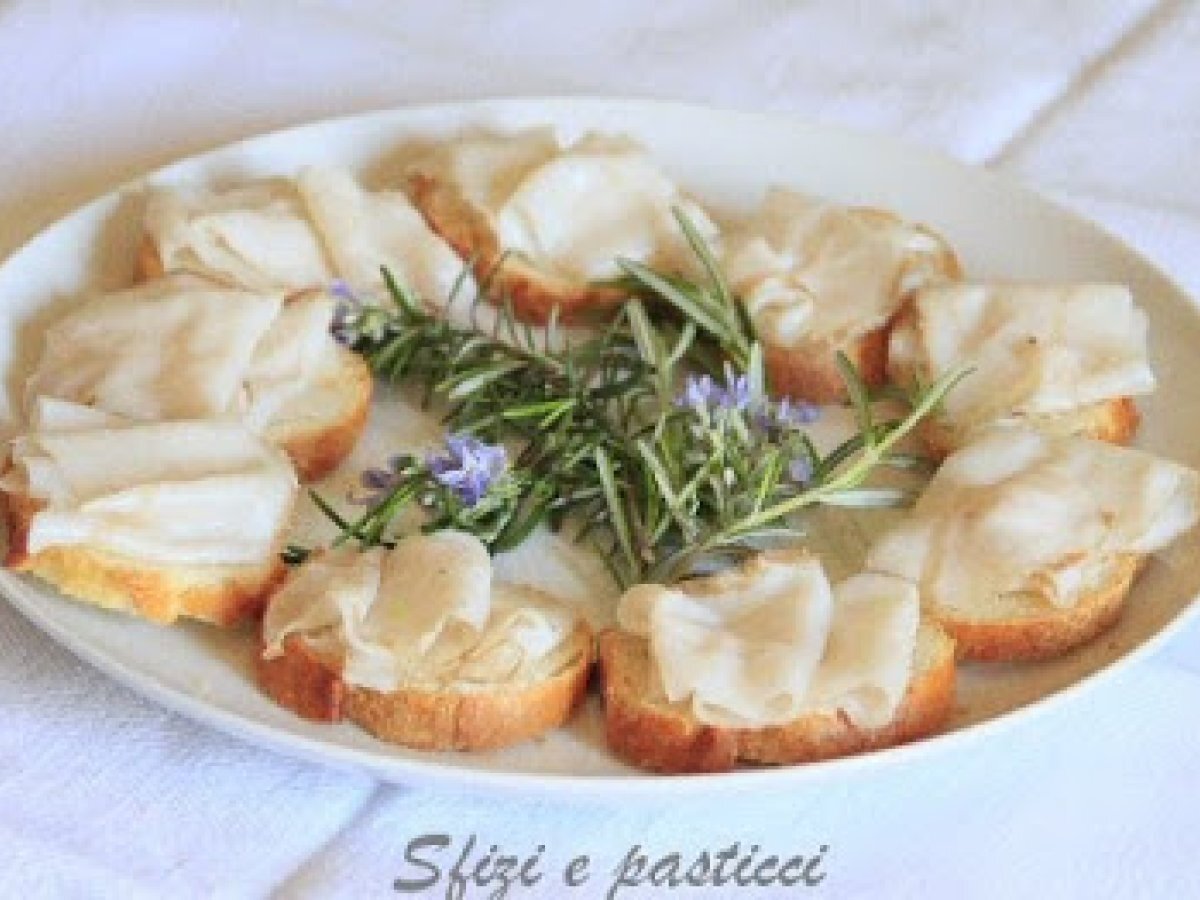
Crostini al lardo di colonnata Ricetta Petitchef
Brown the pancetta over medium heat in a frying pan. Reserve pancetta in a small bowl and pour off the rendered fat into a measuring cup, add extra virgin olive oil to make 1/4 cup. In the hot pan add balsamic. Scrape any bits stuck to the pan and reduce by 1/3. Add the fat/oil back to the pan and warm through.
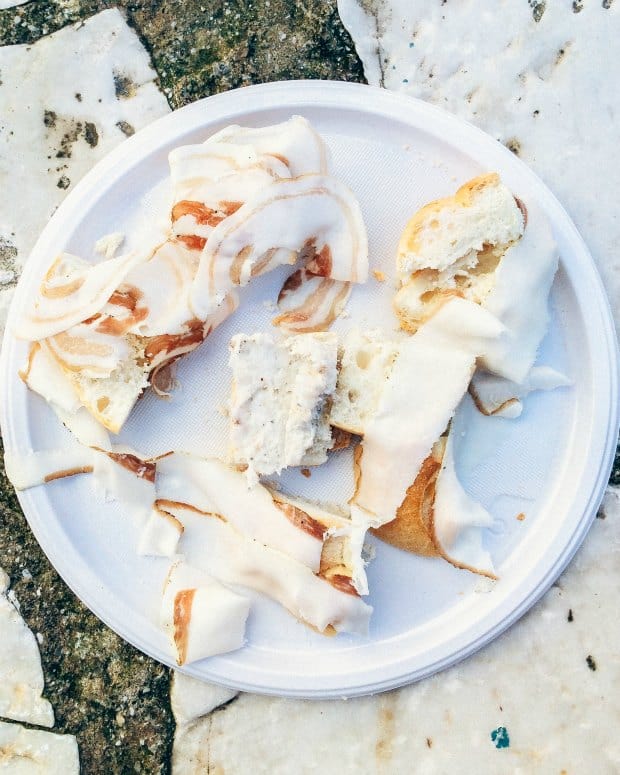
How to Make Lardo Authentic Lardo Recipe from Colonnata Italy
Brown the garlic in the pan (be careful not to burn it) and then add the onion and lardo. Step 4 Cook slowly for 10 minutes so the lardo melts. Step 5 Put a pot of water on to boil for the pasta. When it starts to boil, add salt and bring to the boil again. Step 6 Add the white wine to the onions and lardo, turn up the heat and let the alcohol.
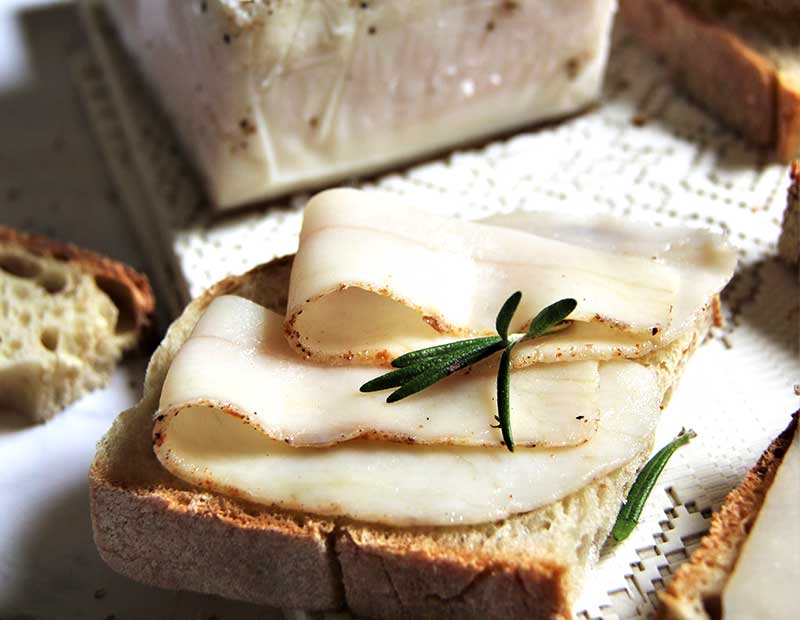
The exquisite, silky lardo di Colonnata L'ItaloAmericano Italian American bilingual news source
The brine can contain any number of herbs or spices including rosemary, cinnamon, juniper, nutmeg, or sage. The two most popular styles are Lardo d'Arnad from the Vallée d'Aoste region of Italy, and Lardo di Colonnata from Tuscany. The whole package is then sealed away for a minimum of 3 months.

Lardo di Colonnata IGP storia, come si prepara e come mangiarlo
Lardo is cured with a salt box method just like pancetta, which is cured pork belly, and mixed with salt, and fresh herbs. The salt box method draws the moisture and creates a surface that prevents it from spoiling. Most lardo is aged for at least six months.
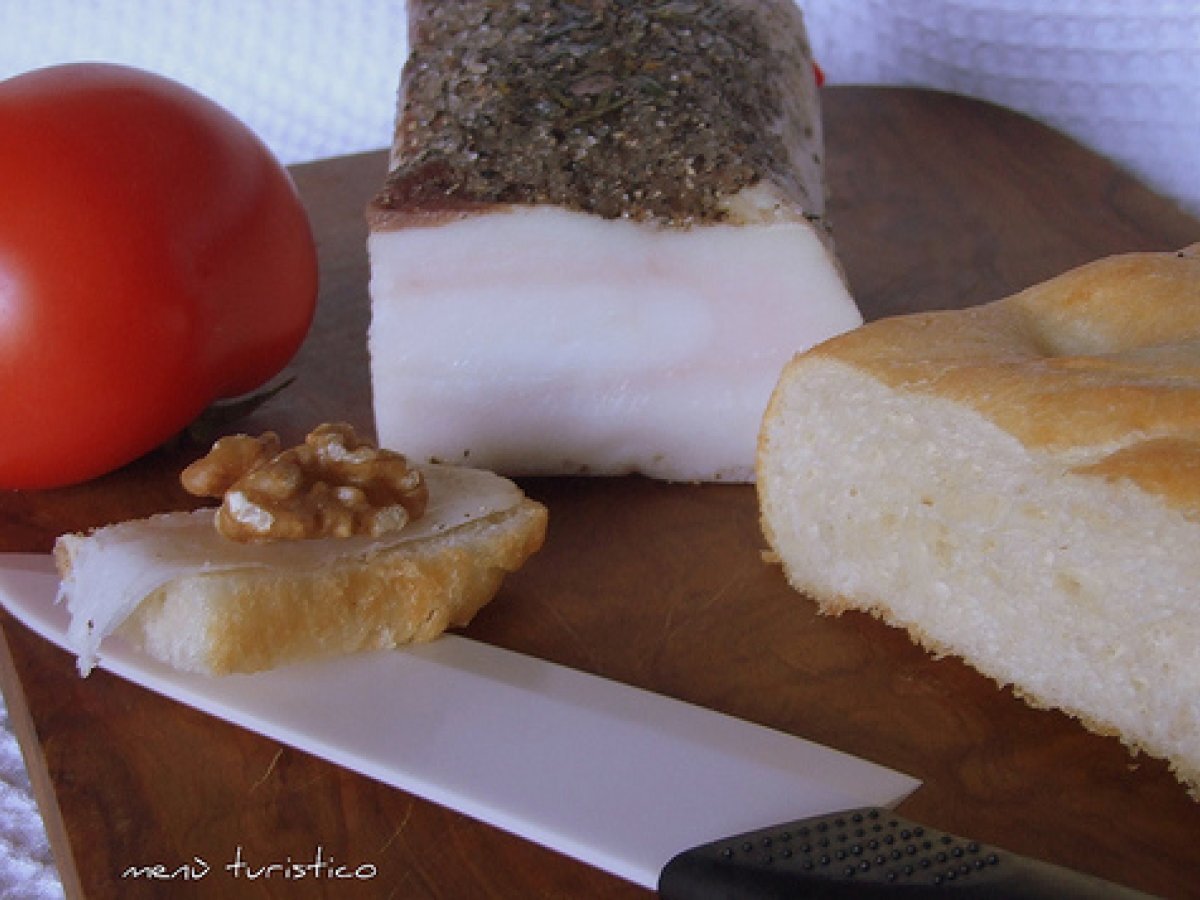
Il lardo di colonnata e gli stuzzichini..... Ricetta Petitchef
It is made by curing and drying back fat mixed with salt and fresh herbs using a salt box method. Lardo is aged for at least six months, which draws out the moisture and creates a surface that prevents it from spoiling. The origins of lardo can be traced back to the town of Colonnata in Tuscany, Italy, where it was first made in the 15th century.
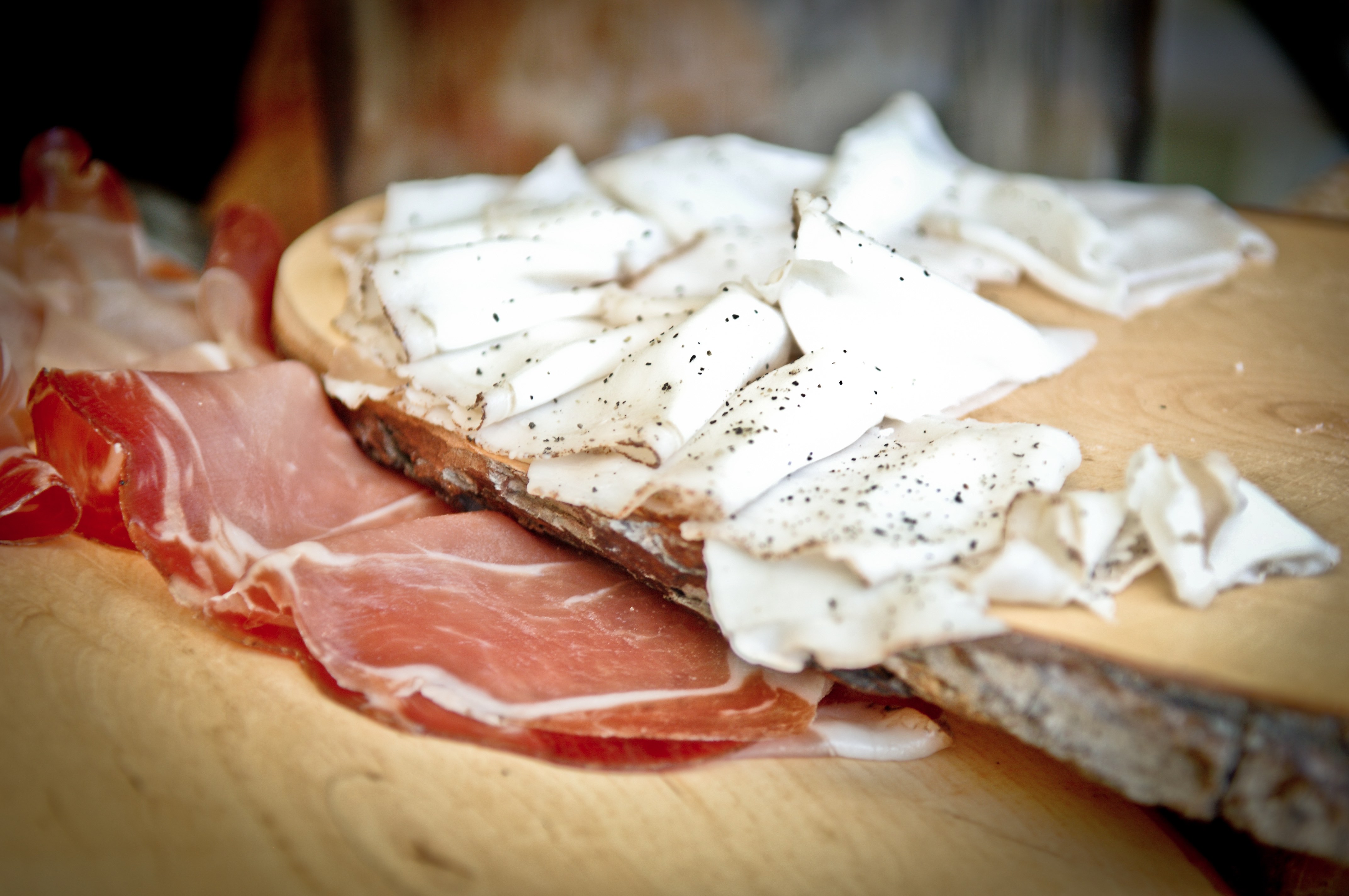
Lardo di Colonnata con Miele di Castagno di Molina Antica Molina
subtitles: english, tedesco, french, yellow, russian, ukrainian, croatian, portuguese, spanish, italianoingredienti:sale grossosale fino marinopepe grossopep.
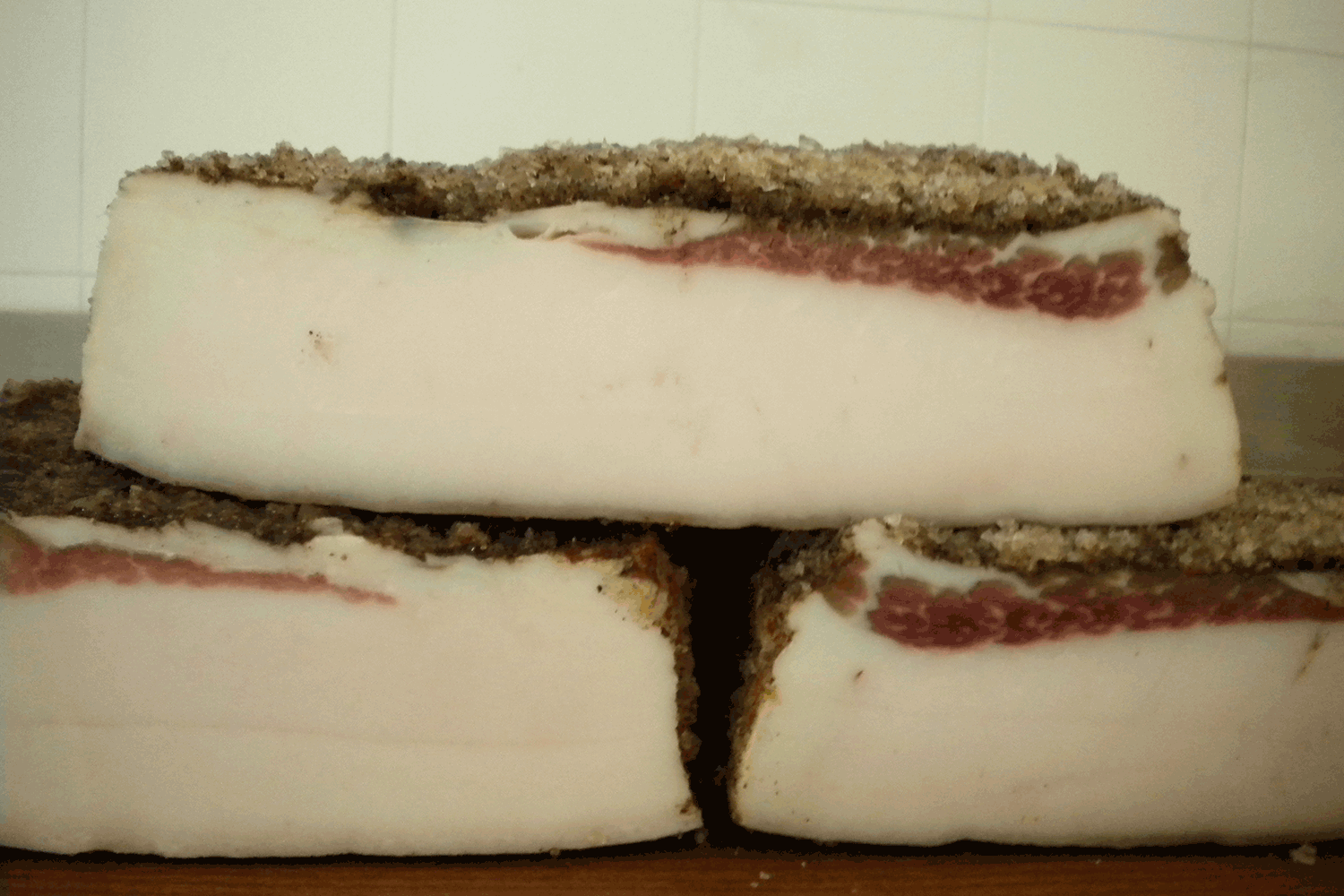
Le Lardo di Colonnata Franco Gullì
Between each lard layer, they place a mixture of spices such as black pepper, sea salt, little pieces of garlic, rosemary, cinnamon, nutmeg, coriander, cloves, aniseed, sage, and oregano. Watching the making process, you get the distinct impression of being in an Oriental spice market.